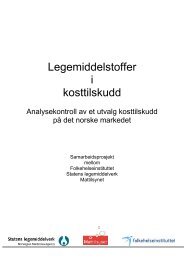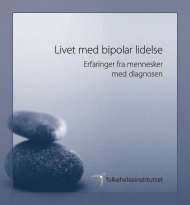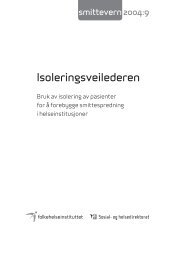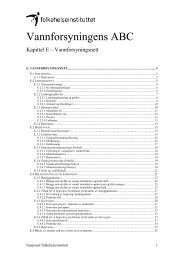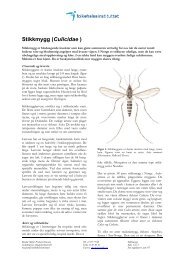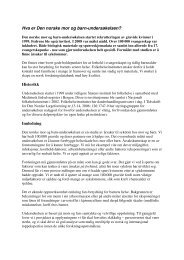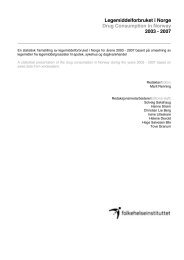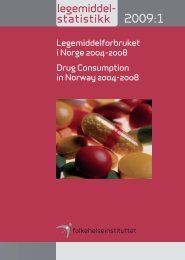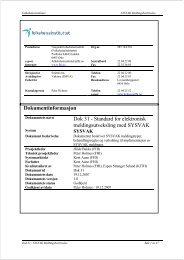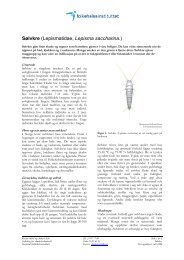rapport 2012:3 - Nasjonalt folkehelseinstitutt
rapport 2012:3 - Nasjonalt folkehelseinstitutt
rapport 2012:3 - Nasjonalt folkehelseinstitutt
Create successful ePaper yourself
Turn your PDF publications into a flip-book with our unique Google optimized e-Paper software.
1.5 Health problems attributed to electromagnetic fields (electromagnetic<br />
hypersensitivity) (Chapter 6)<br />
Health problems attributed to electromagnetic fields, often referred to as electromagnetic<br />
hypersensitivity, denotes a condition where individuals believe that their health problems are<br />
caused by electromagnetic fields. A large number of scientific studies provide evidence that<br />
electromagnetic fields do not cause the symptoms (see 1.3.2.8). However, their health problems<br />
as such are genuine and must be taken seriously. There are large differences between individuals<br />
with health problems attributed to electromagnetic fields, such as the symptoms they<br />
experience, their severity, and which forms of electromagnetic fields trigger them. The proportion<br />
of the population with such health problems is unknown. Figures from other countries are<br />
uncertain and vary significantly, from 1.5 per cent up to 10 per cent of the population.<br />
There are several possible circumstances that may contribute to health problems attributed to<br />
electromagnetic fields. There is probably no single explanatory model that will apply to all of<br />
these problems. The primary cause of symptoms may be other influences: physical, psychological<br />
and social; and different circumstances can play a role. Cultural conditions, stress reactions,<br />
adaptation and other psychological mechanisms can explain why electromagnetic fields<br />
in particular are perceived to be the cause of health problems, even if there is no physical link.<br />
An overall assessment of health and of possible adverse physical, psychological and social<br />
burdens, as well as the patient’s own motivation, is needed as a basis for medical treatment and<br />
other interventions. The goal of treatment and intervention is to reduce symptoms and their<br />
negative impact on life. It is important to develop a relationship of trust between doctor and<br />
patient, and that the patient’s own experience of problems is taken seriously while scientific<br />
information is provided in a supportive way. In some cases, it has emerged that a diagnosable<br />
disease is causing the symptoms. It is therefore important that the first consultation with the<br />
doctor should always result in an adequate medical examination of patients reporting such<br />
problems. Scientific knowledge gives no basis to recommend measures to reduce or avoid<br />
exposure to electromagnetic fields.<br />
Patients with health problems attributed to electromagnetic fields can be characterised as a<br />
sub-group of patients with health problems attributed to environmental factors (e.g., multiple<br />
chemical hypersensitivity and hypersensitivity to their own amalgam fillings). A common<br />
feature for the group of patients who attribute their health problems to electromagnetic fields,<br />
and patients who attribute their health problems to other environmental factors is that they<br />
often have a strong belief in a causal relationship, but scientific studies are unable to demonstrate<br />
or to confirm this.<br />
1.6 Risk management and risk perception (chapters 7 and 8)<br />
The result of the risk assessment, i.e., the degree of risk of adverse health effects and severity of<br />
health problems, is essential for the authorities’ risk management. Risk management may cover<br />
legal regulation, including the establishment of threshold limit values, information, and other<br />
measures. In addition, any uncertainties in risk assessment will have significance, among other<br />
things, in selecting a precautionary strategy.<br />
Summary<br />
Rapport <strong>2012</strong>:3 • Folkehelseinstituttet 39



